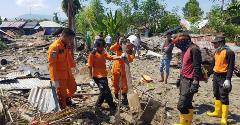
Food safety in South-East Asia
Access to sufficient amounts of safe and nutritious food is key to sustaining life and promoting good health. Food can be a vehicle of disease transmission if contaminated with harmful microbes (bacteria, viruses or parasites) or chemicals/toxins. Around the world, an estimated 600 million - almost 1 in 10 people – fall ill after eating contaminated food each year, resulting in 420 000 deaths and the loss of 33 million healthy life years (DALYs). The WHO South-East Asia Region accounts for 150 million illnesses, 175 000 deaths, and 12 million disability-adjusted life-years (DALYs).
Food safety, nutrition, and food security are closely linked. Unsafe food creates a vicious cycle of disease and malnutrition, particularly affecting infants, young children, elderly, and the sick. In addition to contributing to food and nutrition security, a safe food supply also supports national economies, trade, and tourism, stimulating sustainable development. The globalization of food trade, a growing world population, climate change and rapidly changing food systems have an impact on the safety of food. WHO aims to enhance at a global and country-level the capacity to prevent, detect, and respond to public health threats associated with unsafe food.
Technical links

























 World Food Safety Day (WFSD) is an annual celebration every 7th of June established by the United Nations to raise awareness about food safety. FAO and WHO in the Asia Pacific Region are planning to organize a webinar on June 1 to observe World Food Safety Day 2023.
World Food Safety Day (WFSD) is an annual celebration every 7th of June established by the United Nations to raise awareness about food safety. FAO and WHO in the Asia Pacific Region are planning to organize a webinar on June 1 to observe World Food Safety Day 2023.
